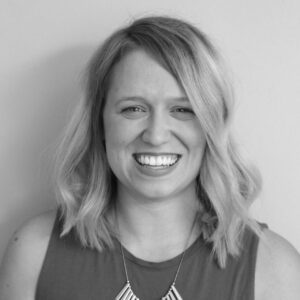One of my final tasks as an undergraduate was to create a teaching portfolio that I could utilize when I started interviewing at different districts. Although the assignment was lofty, the teaching portfolio became the most powerful tool I had at my disposal.
Since art is a visual discipline, it made sense to have a tactile example that showcased my teaching instead of simply trying to verbalize it to an interviewer. If you’re in the process of looking for a new job, then perhaps it is time to invest in creating a teaching portfolio that will help you nail down that new position.
10 Things to Include When Creating Your Teaching Portfolio
1. An Organizational System
Don’t just walk into an interview with looseleaf paper in your hand. The goal is to send the message that you are organized and care about things looking polished. (This tip applies to your attire as well!) Invest some money in a nice binder or book that can hold the contents of your portfolio. I purchased mine for less than $10 from a local craft store. Don’t forget that thick paper, colored ink, and page protectors will all make your teaching portfolio look more polished.
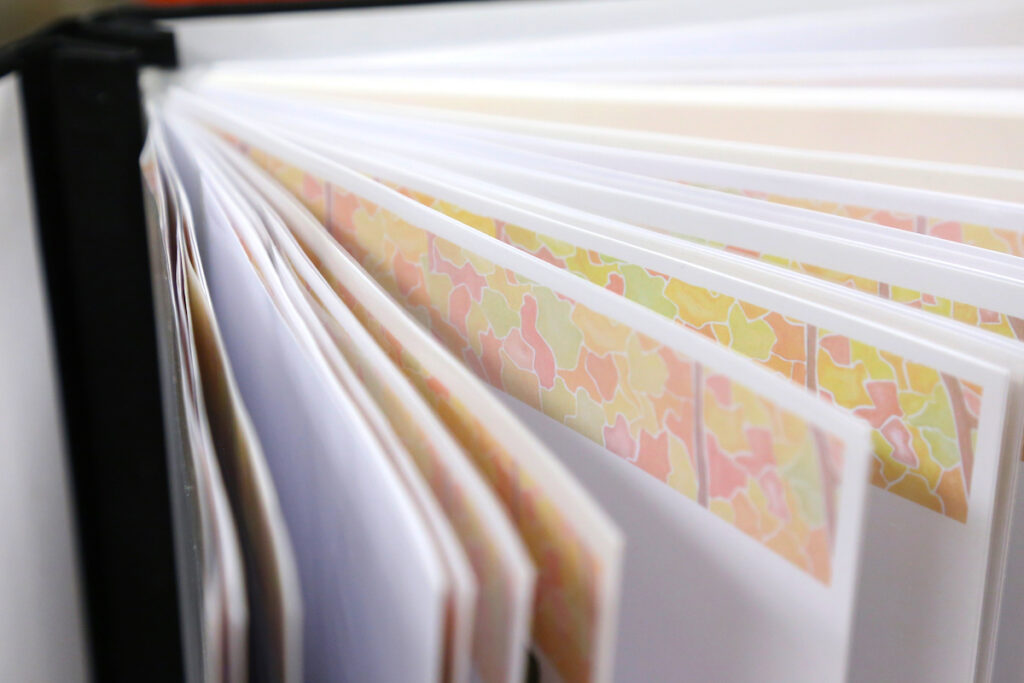
2. A Theme
Perhaps equally important as organization is cohesion in your portfolio. You want the formatting and fonts to be consistent and the layout of your portfolio to flow.
Try to come up with a creative way to give your portfolio a cohesive look. In my portfolio, I used Photoshop to take a rectangular slice out of a picture of one of my personal paintings. I used that slice as a header on every single page of my portfolio so that everything looked like it belonged together.
3. Table of Contents
Once you know what is going into your portfolio and in what order, you will need to create a Table of Contents. This will make it easy for any interviewer to find what they are looking for in a flash. This should be the first page of your portfolio and match your general theme.
4. Philosophy of Teaching
In my mind, this is an optional element you could add to enhance your teaching portfolio. A philosophy of teaching is a few paragraphs long and details why YOU think art is important, relevant, and should be taught. Your interviewer may not have the time to read it, but writing it may help you answer an all-time favorite interview question, “Why do you want this job?”
5. Resume
Besides your teaching license, your resume is the most important piece of paper you can bring. It’s essential that your resume is polished. Make sure to proofread and try to keep it to one page.
Try to narrow down the content of your resume to these categories:
- Name
- Address
- Website (if you have one and it’s relevant)
- Objective
- Education
- Teaching Experience
- Student Teaching Experience (if this is the first job you’re applying for)
- Awards and Honors
- Volunteer Experience
However, don’t feel like your resume has to be boring! The same picture header I used for the theme of my portfolio appears at the top of my resume too. It adds just a touch of color and flare to help catch my interviewer’s eye and make them want to read more about me.
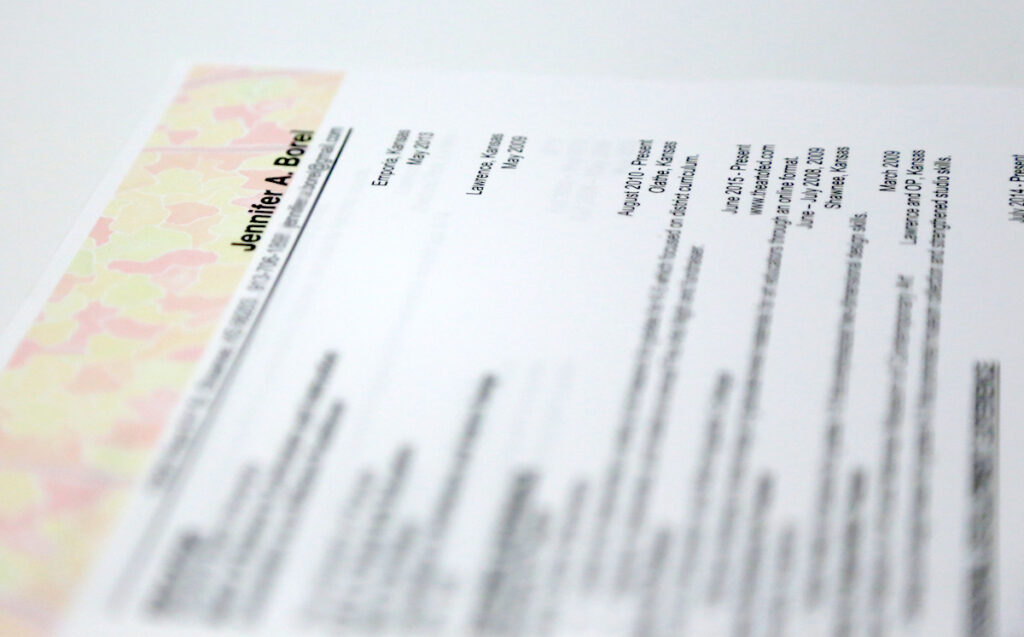
6. Lesson Plan Example
Pick out one of your best lesson plans and showcase it in a two-page spread. For the love of paintbrushes, don’t let this section be all words! Briefly state these things: overview, key ideas, objectives, and standards. Then think about ways to incorporate pictures. I took screenshots of a few slides from the lesson PowerPoint and the lesson rubric. I even added pictures of student examples.
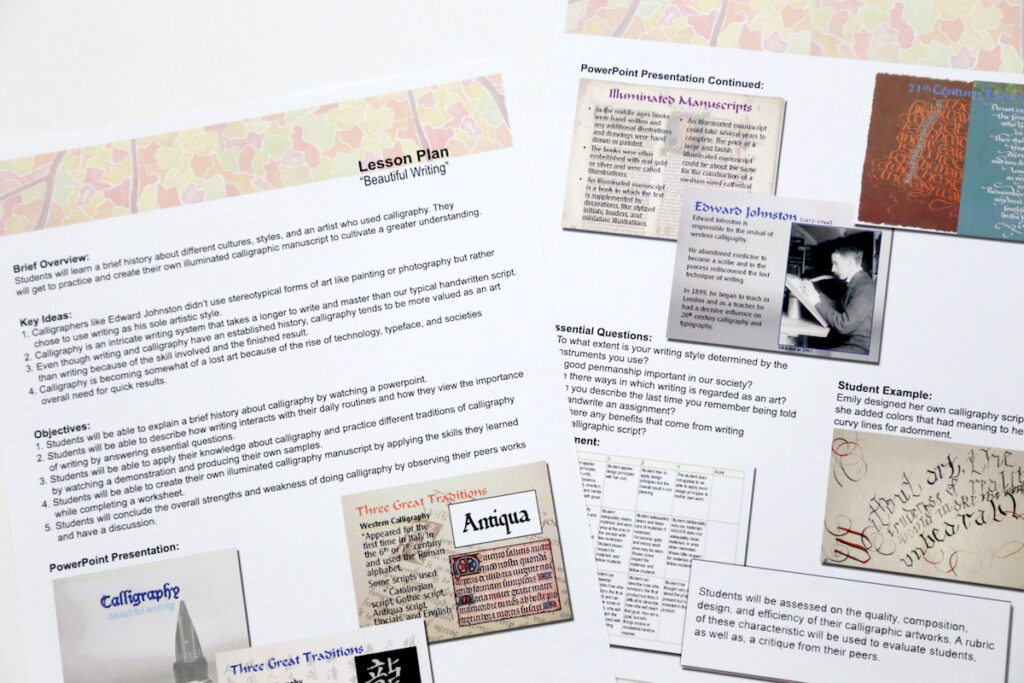
7. Teaching Experience
Whether you are student teaching or are a seasoned veteran, it is important that you showcase your past teaching experiences in a succinct way. One way to do this is to create a few pages that provide an overview of your career. Think about including basic information like where you taught and what grade levels you taught alongside photos that showcase some of your achievements at each place.
I suggest including photos of you actually teaching lessons or working with students. You can ask a cooperating teacher, paraprofessional, or even students to snap some photos of you in action.
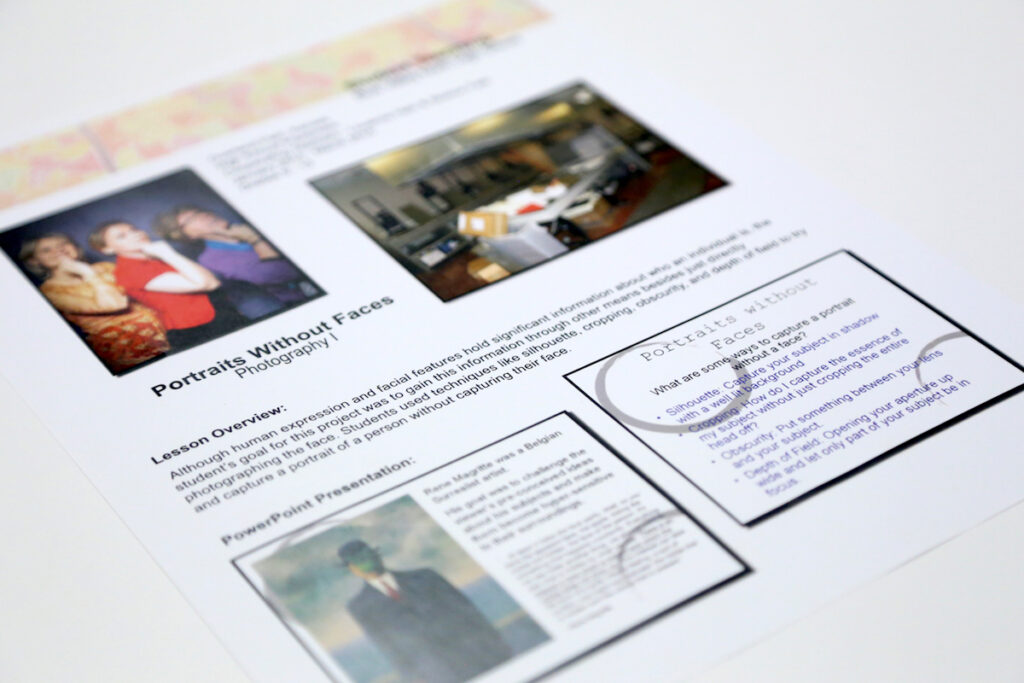
8. Student Art Examples
One of the most powerful things you can include in your portfolio is examples of student work. I generally put 4 to 5 photographs on each page. The only words I include are labels saying the grade level and name of the project. When deciding what to include, choose projects that will stand out and make sure a variety of mediums are represented. In addition, make sure to take high-quality photographs in a well-lit area.
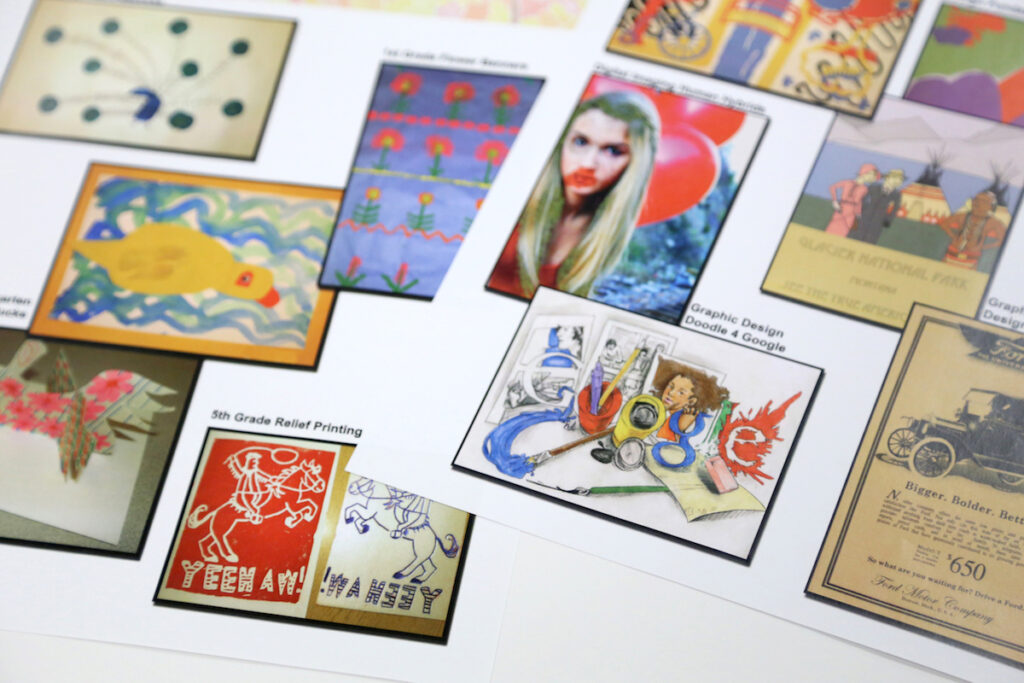
9. Personal Art Examples
You might be an art teacher, but don’t forget, you are also an artist. As long as the main focus of your portfolio is the students, you can definitely include photos of your own artwork. Just as you did with your student art examples, make sure to take exceptional photographs. I chose seven artworks of my own that highlighted different mediums.
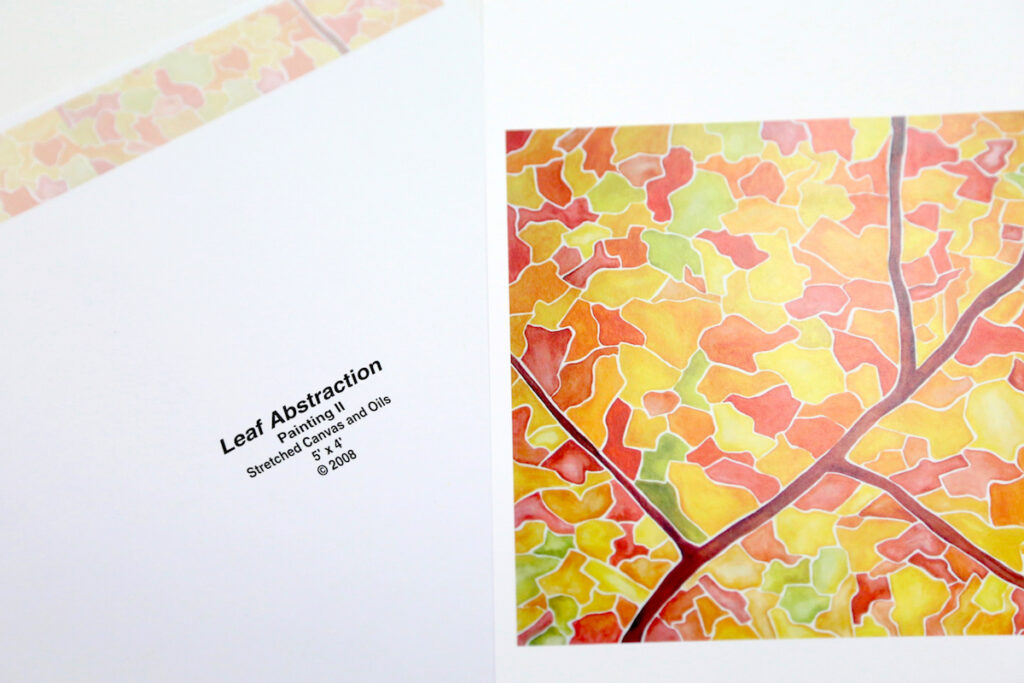
10. Letters of Recommendation
Last but not least, make sure to include a few letters of recommendation. It’s easy to vouch for ourselves, but it means more coming from someone else. You may want to make extra copies of these and your resume to leave with your interviewer as you leave.
Combine of all these elements together and you will be one of the most well-equipped art teacher interviewees out there. Always make sure to pull out your portfolio and reference it as you are interviewing. A tool like this won’t do you any good unless you use it!
Has a teacher portfolio helped you land a job? Tell us about it!
Is there anything else you would include in a teaching portfolio? Make sure to share it with us in the comments!
Magazine articles and podcasts are opinions of professional education contributors and do not necessarily represent the position of the Art of Education University (AOEU) or its academic offerings. Contributors use terms in the way they are most often talked about in the scope of their educational experiences.

